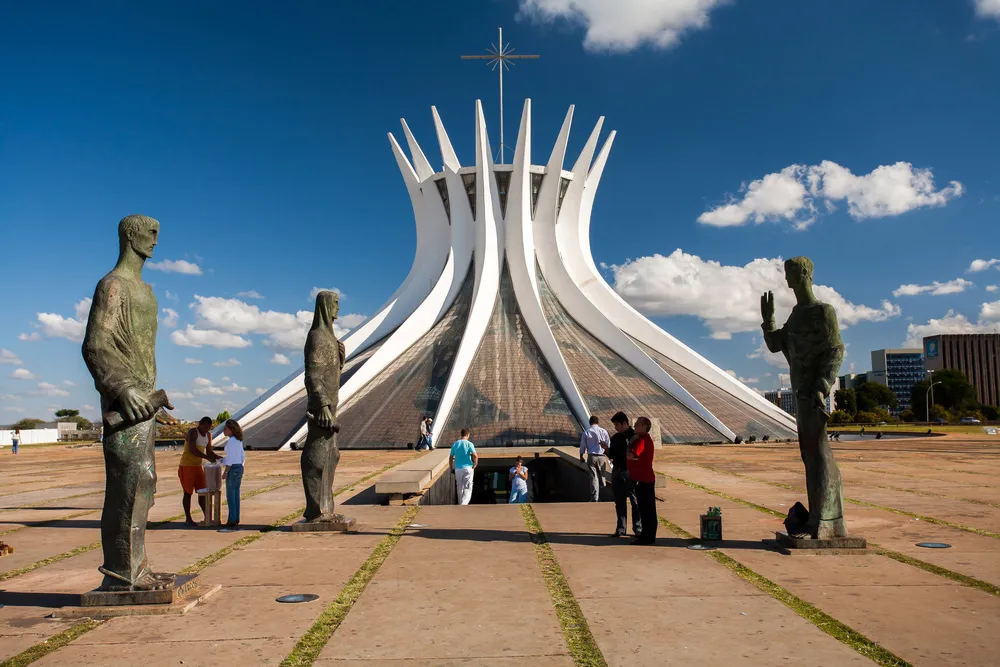News
Brasília: The Modernist Capital of Brazil
Brasília: Brasilia, Brazil’s federal capital and an excellent example of modernist architecture and urban planning, stands as a spectacular testament to this field. Conceived as part of a national plan to develop Brazil’s interior while moving the government away from Rio de Janeiro for good, Brasilia was inaugurated on August 10, 1960 under Lucio Costa, Oscar Niemeyer, and Joaquim Cardozo’s creative leadership; their city layout, buildings, public spaces reflect innovative aesthetic principles they introduced that earned Brasilia the designation as UNESCO World Heritage Site status in 1987.

brail capital
The City Plan
Table of Contents
Brasilia’s city plan features a geometric shape resembling either a bird, bow and arrow or airplane – these concepts all serve to illustrate Brasilia’s design concept. The Monumental Axis runs from northwest to southeast through the heart of the city and is lined by federal and civic buildings such as Congress, Supreme Court, Presidential Palace, and Cathedral. The Monumental Axis intersects with the Highway Axis, which runs north to southwest connecting residential and commercial areas in the city.
Residential areas are organized into quadras which feature green spaces as well as local facilities. Quadras are six-storey apartment buildings connected by pylons that allow nature to pass beneath and around them, creating an ever-evolving landscape beneath and around them. Commercial areas are situated along Highway Axis as well as in central area of city where there are hotels, restaurants, and cultural venues.
The Architecture
Brasilia’s architecture is distinguished by the use of reinforced concrete, steel and glass components as well as its expressive forms and curves that contrast with its straight city plan. Oscar Niemeyer, the chief architect of Brasilia, was heavily influenced by modernist architecture as well as his mentor Le Corbusier. Niemeyer created an aesthetic all his own that explored space, light and movement through sculpture-like buildings that explored space, light and motion.
Niemeyer is best known for creating some of Brasilia’s iconic structures such as the Cathedral, National Congress Buildings, National Museum and Alvorada Palace. Niemeyer collaborated with other artists and designers such as Roberto Burle Marx, Athos Bulcao Alfredo Ceschiatti Marianne Peretti on its landscaping, tilework, sculptures and stained glass throughout its streets and squares.
The Legacy
Brasilia is an iconic city, embodying both Brazil’s hopes and challenges as seen through its construction and subsequent evolution over time. Conceived as an emblem of democracy, progress, and national unity; yet faced much controversy for its social, economic, and environmental repercussions; Brasilia has grown and changed over the years to meet the needs and demands of its population – now exceeding three million residents; it has also inspired architects and urbanists worldwide who study its design and history; though still evolving over time; as it also preserves and celebrates its original vision and heritage while celebrating and living within its living and evolving structure – an impressive achievement indeed.
Stay tuned to CHOPNEWS for the latest scoops and updates of Business News, Sports News, Technology News, World News and Entertainment News.
